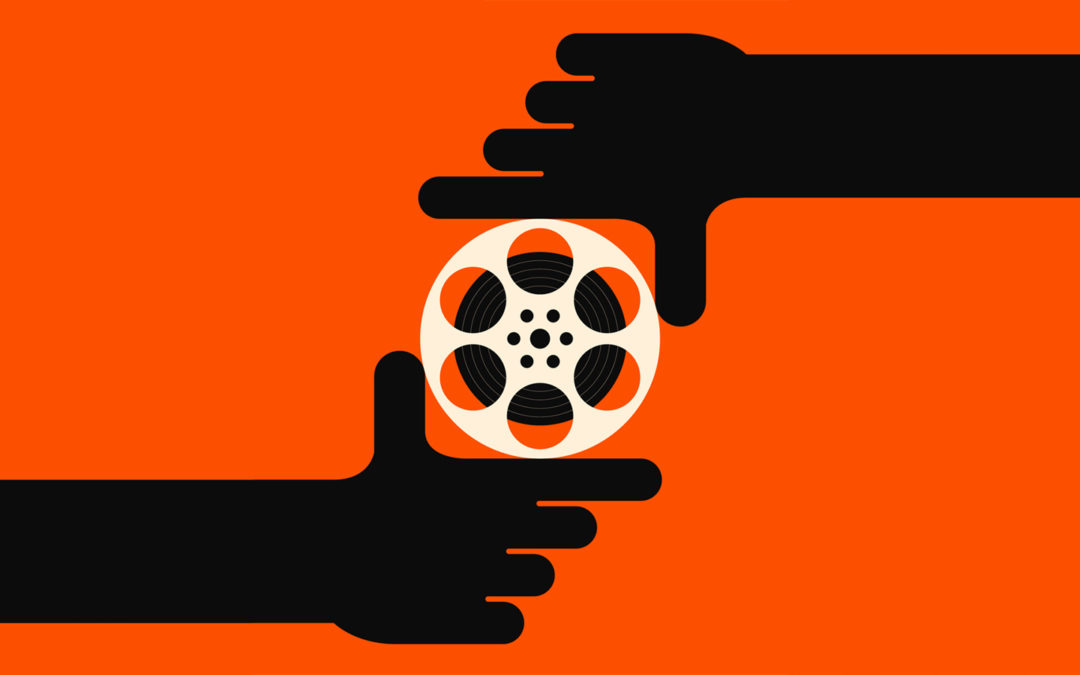𝙴𝙽𝙶 𝟻𝟷𝟻𝟸 | 𝚁𝚎𝚜𝚙𝚘𝚗𝚜𝚎 𝙿𝚘𝚜𝚝 #𝟽: 𝙷𝚘𝚠 𝙳𝚘𝚎𝚜 𝚂𝚘𝚞𝚗𝚍 & 𝚅𝚒𝚍𝚎𝚘 𝙿𝚎𝚛𝚜𝚞𝚊𝚍𝚎?
In McKee's article, her main argument is that sound is multi-modal, which means that it exists in a variety of platforms. For example, we hear sound with film, PowerPoint presentations, YouTube videos, audio books, and more. These multi-modal platforms define a whole entity that develops into an effective product for the user. McKee highlights that sound, although it can be analyzed as a singular entity, is everywhere and can be seen paired with many other modes. Next, VanKooten argues that bodily memory and the act of acquiring knowledge through sensory experiences become a dynamic structure for persuading and grasping concepts. VanKooten further argues that as students, we need to attune more towards multi-modal listening. Next, Alexander's argument is for the increased attention to the works of artist Glenn Gould and how important sound is in modern literacy training. He states, "More specifically, contemporary sound studies attunes our attention now to the importance of considering sound - affectively, rhetorically, and materially - as a significant component of meaning making and experience" (74). Rodrigue et al.'s article argues that sound and listening are within a framework of analyzing and interpreting external stimuli that we often use to discuss multi-modality. In Hocks' and Comstock's article, digital material is important because it can be interpreted in many ways. Their goal in exploring aurality is not to suggest that we pay attention to aurality over writing. Instead, Hocks and Comstock directs the reader to primarily focus on writing, aurality, and other composing modalities. Next, Hidalgo stresses on the significance of moving visual images within film-making. In addition, Hidalgo emphasizes that the idea of women taking part in the act of film-making is a norm. As a feminist, the methodological approach that she takes on and practices reflects her firm stance on women filmmakers. Lastly, McIntyre's article discusses about viewers’ understanding of a controversy by presenting new information about it in a well-organized way. In the case of the 2013 Boston Marathon bombing, this was an issue where public discourse was actively taking place and thoroughly examined after.
The meaning of contemporary rhetoric is branching out not just within language, but also includes verbal and visual stimuli. In fact, the components of classical, traditional rhetoric is categorized into types of rhetorical applications, which are semantic (language/logic) and syntactic (analysis). On the other hand, there is so much more to contemporary rhetoric such as arrangement of visuals (i.e. signs, shapes, patterns, etc.) and that in today's technological age and use, analyzing advertising information is prevalent and predominantly applied in modern visual culture.
As students of rhetoric, we not only come across sound on a "sensuous" and "emotional plane" but also reasonably on a "musical plane" (McKee, 344). While the concept of sound has been generally equated to music, in which it is typically associated with musically-driven elements: beat, pitch, rhythm, meter, tempo, melody and more, sound provides for us to develop logical arguments based off on hearing dialogue, and for sharpening our listening practices. In addition, applying and incorporating multi-modal methods of listening into rhetoric and/or composition classrooms allows for students to strengthen their analytical skills, and become rhetorical creators of sound.
Questions to Consider & Discuss:
1. What are the roles of visual aesthetics and aurality in rhetorical argumentation?
2. Where does the concepts of advertising and marketing play into digital rhetoric?

Hello Christina!
ReplyDeleteI've also been thinking recently after having read this week's readings about how advertising and marketing play into digital rhetoric and persuasion. McKee's concepts of how vocal delivery can affect meaning got me thinking about what advertisements most influence me and why? And if advertisements rarely influence me as a consumer, than what at least keeps them in my mind all day. We've read a lot this week about music and how it can be expressive and sensual in regards to how it influences the listener. I think music is a tool that marketers heavily rely on to make their advertisements stick, because the longer an ad sticks in your mind, the more you're thinking about the product and the higher the chances are that you'll do your duty as a consumer in one way or another. Personally, if an ad is on my mind, even when it's a product I'm not interested in the slightest, I find that is entirely due to the dynamic of the music choice and the visuals. A couple weeks ago, a Frontier ad was all over Youtube in which "Surfin USA" was covered using a Ukulele. My goodness!! I was sick of this ad because of how inescapable it was! However, I couldn't help but enjoy seeing the ad come up because the song made me happy, and therefore, Frontier was automatically in my head simply for being associated with the song. The marketing team at Frontier has therefore done their job with me. The visuals, which were all over the place, had very little to do with network internet or television service at all, yet that was the goal all along. Catchy song, plus visuals of people having the time of their lives made me remember this Frontier ad, and as annoying as that is, that's the power that music, sound, and visuals have in relation to digital rhetoric and persuasion.